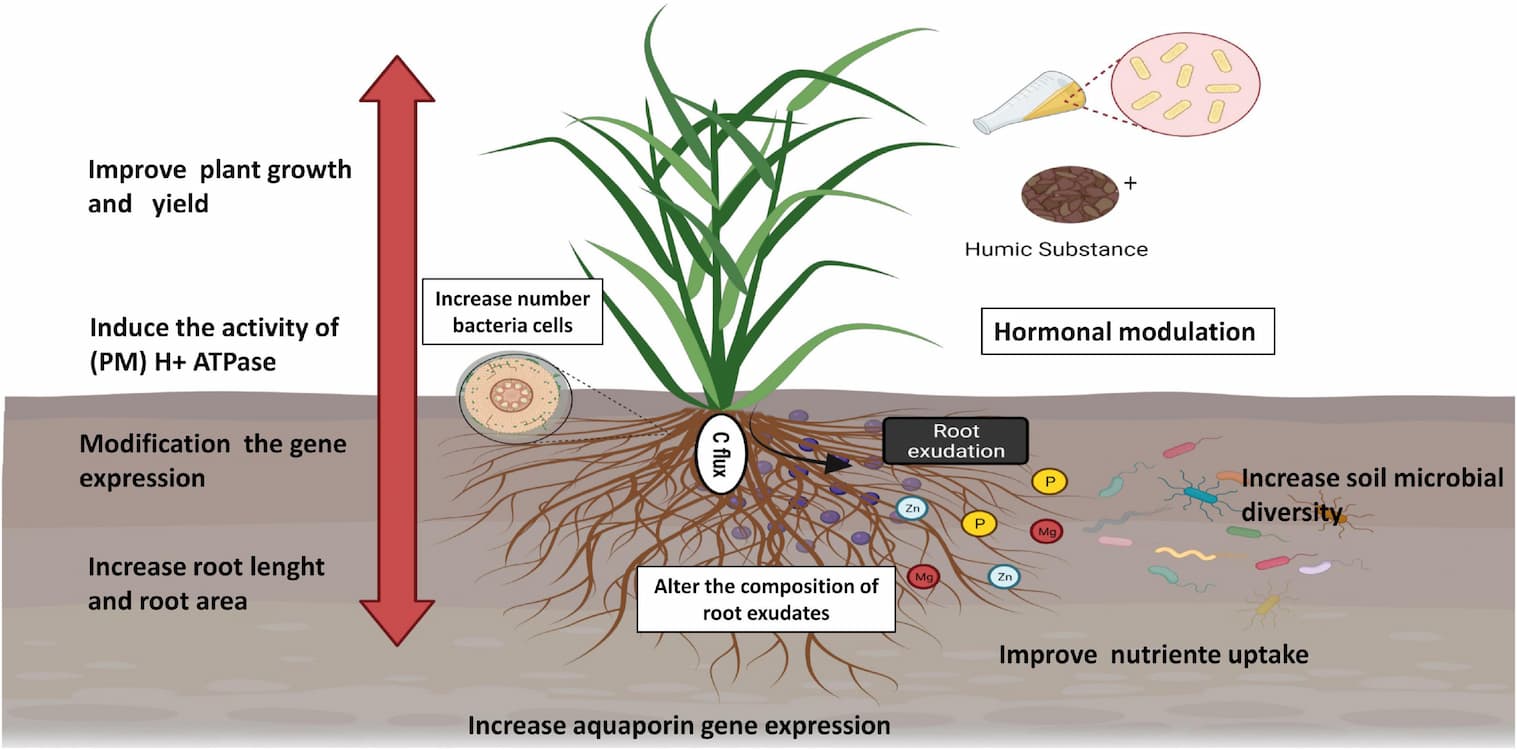🌿 How Key Components Work: Humic Acid, Amino Acids, and Beneficial Microorganisms

Modern organic and biological fertilizers often feature a powerful trio of active ingredients: humic acid, amino acids, and beneficial microorganisms. But how does each of these work to nourish and protect plants? Let’s break it down.
🌱 1. Humic Acid – Unlocking Nutrients and Improving Soil Structure
Humic acid, derived from natural organic matter, plays a key role in chelating nutrients in the soil, making them more available for plant uptake, especially micronutrients like Fe, Zn, and Cu.
Other benefits include:
-
Improving soil structure and aeration
-
Increasing water and nutrient retention capacity
-
Enhancing cation exchange capacity (CEC) for better soil fertility
👉 It acts as a “key” to long-term soil health and regeneration.
💪 2. Amino Acids – Enhancing Plant Resilience and Growth
Amino acids are the building blocks of proteins, essential for every biological function in plants. When applied through foliar sprays or root drenches, they help to:
-
Increase plant tolerance to stress (heat, drought, salinity, transplant shock...)
-
Boost photosynthesis and enzyme activity
-
Stimulate vegetative growth, shoot development, and flowering
👉 Particularly useful during climatic transitions, post-pruning, or in recovery from crop stress.
🦠 3. Beneficial Microorganisms – Root Protection and Nutrient Mobilization
Microbial species like Bacillus spp. and Trichoderma spp. thrive in the rhizosphere and provide multiple benefits:
-
Compete with and suppress harmful soil-borne pathogens
-
Protect root systems and reduce risks of root rot
-
Break down organic matter and unlock nutrients, improving plant uptake
👉 These microbes serve as the plant’s natural defense system, promoting growth without the need for synthetic chemicals.
✅ Conclusion
The synergy of humic acid, amino acids, and beneficial microbes forms the backbone of many modern, eco-friendly plant nutrition strategies. When combined properly, they build a healthy root-zone ecosystem, resulting in stronger plants, better soil, and long-term productivity.
📌 Pro tip: When selecting a biological or organic fertilizer, check the label for these three components—they’re a reliable sign of a complete and effective solution.